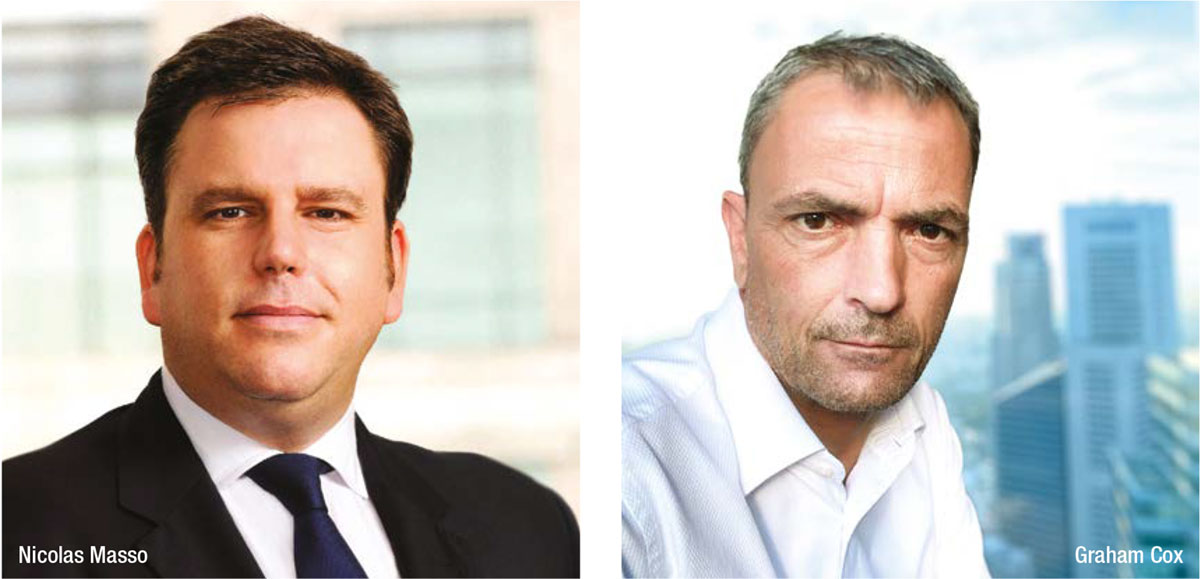
Traditional sell-side firms can engage most effectively in fixed income by enabling, rather than pushing, buy-side strategy.
As markets face considerable operational pressure, delivering change through innovation can be difficult. Nicolas Masso and Graham Cox of UBS look at the way buy-side and sell-side firms can partner to manage a path forward.
Is innovation disrupting trading today?
Nicolas Masso: The most successful pioneers in finance are often those that have taken protocols or processes and either streamlined or made them more efficient. This can happen by simplifying the way clients access the markets and data, or via new or existing protocols, and new ways of interacting on trade negotiations.
We currently have innovators who are using new technologies – obviously blockchain is an example – but are working on adapting them to fixed income trading.
Then we also have some of the more traditional and established market participants simplifying and streamlining the way that liquidity is aggregated, and the way that baskets are traded via portfolio trading. The path of simplifying and removing boundaries, creating a more open architecture will lead innovation going forward.
There is room for complete disruptors, but human behaviour is the most complicated pattern to change, making it harder to create entirely new ways of working.
Graham Cox: Algorithmic and alternative liquidity providers have definitely caused some disruption to the sell side and we expect continued growth in this space both through new entrants and product expansion.
Similarly all-to-all markets are challenging, or rather complimenting, the traditional liquidity model, in part due to their utilisation by the alternative liquidity providers and smaller regional dealers who benefit from plug and play global distribution. True client to client trading is growing and whilst challenging has enormous potential.
How is the sell side able to support buy side firms when they lead change?
Nicolas Masso: We are at a pivotal moment. We see the first signs of true electrification of the market, supported by data management and protocol integration. Innovative protocols in the marketplace, are a double edged sword. On one side, the race for innovation leads not only finance, but all industries forward but can easily become a heavy burden on market players. A constant need for innovation will rapidly drag a firm’s resources, which can have an impact on profitability. Making the right decisions on what technologies to support is critical for the sell side.
More often than not, change will be driven by the buy side adopting new trading protocols faster that the sell side can do. At UBS we are client led, so we will always try accommodate the client’s demand in technology through continuous investment.
What can traditional dealers do to broaden client access to liquidity?
Graham Cox: Client to client trading is not the sole realm of platforms and traditional dealers can also leverage their franchises in this regard. Smart data usage and automation enhance and scale this which is core to Bond Port’s philosophy.
Nicolas Masso: By trading on Bond Port our clients step into a global network across multiple jurisdictions and regulatory frameworks which simplifies the access to liquidity in the market place. Through technology and UBS’s global footprint we are able to broaden the coverage for our clients who can reach counterparties in 70 countries round the clock.
Where do you see dealers improving execution quality for clients and how are they achieving that?
Graham Cox: Again data and technology can be leveraged to increase process efficiency which ultimately benefits execution quality for clients. The downsides however are development costs, which can be significant, and the breadth of our data set.
Where do dealers stand in enhancing clients’ data and analytics?
Nicolas Masso: Every client is aware of their own activity in the marketplace; however, dealers have a much wider perspective of the market flow simply because of their market making activity across multiple clients with different liquidity needs. As a result, our ability to aggregate and paint a global liquidity picture from data is much greater, but on Bond Port, given the trans-regional nature of flows, it is truly unique.
We are definitely observing the trend of clients looking for direct access to dealer inventories and data via direct connections. At UBS we are focussed on providing the easiest possible integration of our liquidity to our clients, and will continue to enhance our options as new technologies develop.
©Markets Media Europe 2025























